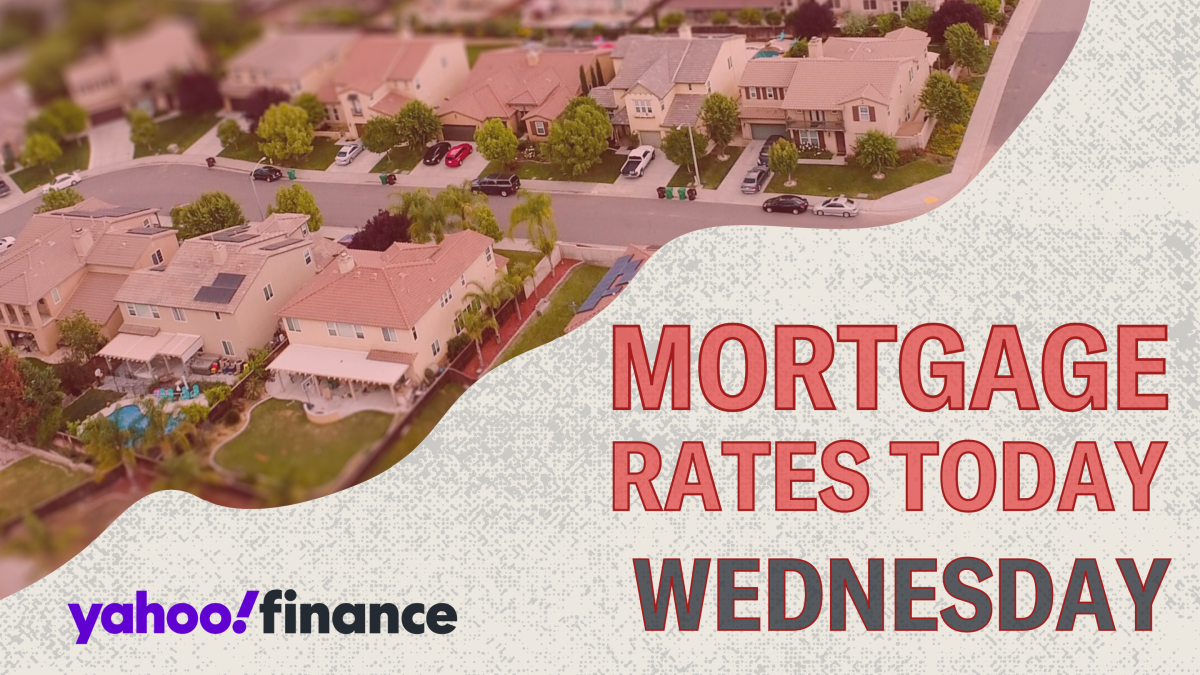Mortgage rates had increased for a couple straight days, but they’re finally back down again today. According to Zillow, the average 30-year fixed mortgage rate has inched down by one basis point to 6.45%. The 20-year fixed interest rate has dropped by 12 basis points to 6.30%, and the 15-year fixed rate has fallen by two basis points to 5.82%.
The Federal Reserve’s final meeting of the year took place today. The central bank announced its decision to cut the federal funds rate by 25 basis points. Many economists predicted the Fed would decrease its rate, so the anticipation of the cut means any related mortgage rate decreases have probably already occurred. It’s unclear when the Fed will slash rates again, so mortgage interest rates could stay high for a while.
Dig deeper: How the Federal Reserve rate decision impacts mortgage rates
Here are the current mortgage rates, according to the latest Zillow data:
-
30-year fixed: 6.45%
-
20-year fixed: 6.30%
-
15-year fixed: 5.82%
-
5/1 ARM: 6.62%
-
7/1 ARM: 6.54%
-
30-year VA: 5.91%
-
15-year VA: 5.48%
-
5/1 VA: 6.13%
Remember, these are the national averages and rounded to the nearest hundredth.
Learn more: 5 strategies for getting the lowest mortgage rates
These are today’s mortgage refinance rates, according to the latest Zillow data:
-
30-year fixed: 6.50%
-
20-year fixed: 6.27%
-
15-year fixed: 5.83%
-
5/1 ARM: 6.11%
-
7/1 ARM: 6.56%
-
30-year VA: 5.79%
-
15-year VA: 5.52%
-
5/1 VA: 5.36%
Again, the numbers provided are national averages rounded to the nearest hundredth. Mortgage refinance rates are often higher than rates when you buy a house, although that’s not always the case.
Use Yahoo Finance’s free mortgage calculator to see how various interest rates and term lengths will impact your monthly mortgage payment. It also shows how the home price and down payment amount play into things.
Our calculator includes homeowners insurance and property taxes in your monthly payment estimate. You even have the option to enter costs for private mortgage insurance (PMI) and homeowners’ association dues if those apply to you. These details result in a more accurate monthly payment estimate than if you simply calculated your mortgage principal and interest.
There are two main advantages to a 30-year fixed mortgage: Your payments are lower, and your monthly payments are predictable.
A 30-year fixed-rate mortgage has relatively low monthly payments because you’re spreading your repayment out over a longer period of time than with, say, a 15-year mortgage. Your payments are predictable because, unlike with an adjustable-rate mortgage (ARM), your rate isn’t going to change from year to year. Most years, the only things that might affect your monthly payment are any changes to your homeowners insurance or property taxes.
The main disadvantage to 30-year fixed mortgage rates is mortgage interest — both in the short and long term.
A 30-year fixed term comes with a higher rate than a shorter fixed term, and it’s higher than the intro rate to a 30-year ARM. The higher your rate, the higher your monthly payment. You’ll also pay much more in interest over the life of your loan due to both the higher rate and the longer term.
The pros and cons of 15-year fixed mortgage rates are basically swapped from the 30-year rates. Yes, your monthly payments will still be predictable, but another advantage is that shorter terms come with lower interest rates. Not to mention, you’ll pay off your mortgage 15 years sooner. So you’ll save potentially hundreds of thousands of dollars in interest over the course of your loan.
However, because you’re paying off the same amount in half the time, your monthly payments will be higher than if you choose a 30-year term.
Dig deeper: 15-year vs. 30-year mortgages
Adjustable-rate mortgages lock in your rate for a predetermined amount of time, then change it periodically. For example, with a 5/1 ARM, your rate stays the same for the first five years and then goes up or down once per year for the remaining 25 years.
The main advantage is that the introductory rate is usually lower than what you’ll get with a 30-year fixed rate, so your monthly payments will be lower. (Current average rates don’t reflect this, though — fixed rates are actually lower. Talk to your lender before deciding between a fixed or adjustable rate.)
With an ARM, you have no idea what mortgage rates will be like once the intro-rate period ends, so you risk your rate increasing later. This could ultimately end up costing more, and your monthly payments are unpredictable from year to year.
But if you plan to move before the intro-rate period is over, you could reap the benefits of a low rate without risking a rate increase down the road.
Learn more: Adjustable-rate vs. fixed-rate mortgage
The national average 30-year mortgage rate is 6.45% right now, according to Zillow. But keep in mind that averages can vary depending on where you live. For example, if you’re buying in a city with a high cost of living, rates could be even higher.
Mortgage rates might decrease a bit before the end of 2024, but they aren’t expected to plummet. They’ll probably decrease in 2025, but as the country awaits how Trump’s presidency will affect the economy, it’s unclear how significantly rates could drop next year.
With a couple of exceptions, mortgage rates have been dropping over the last couple of weeks in anticipation of today’s Fed meeting and federal funds rate cut.
In many ways, securing a low mortgage refinance rate is similar to when you bought your home. Try to improve your credit score and lower your debt-to-income ratio (DTI). Refinancing into a shorter term will also land you a lower rate, though your monthly mortgage payments will be higher.
EMEA Tribune is not involved in this news article, it is taken from our partners and or from the News Agencies. Copyright and Credit go to the News Agencies, email news@emeatribune.com Follow our WhatsApp verified Channel




